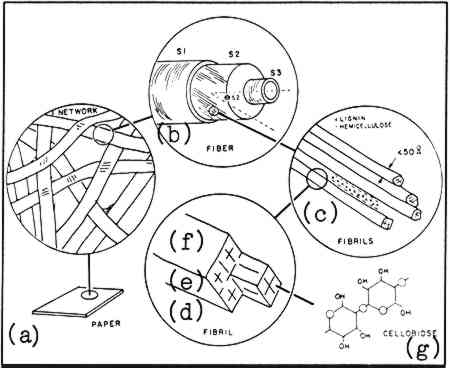RECENT SCIENTIFIC RESEARCH IN PAPER CONSERVATIONDIANNE VAN DER REYDEN
1 INTRODUCTIONIn 1988, the first American Institute for Conservation Book and Paper Specialty Group Update Session reviewed scientific research in five important areas of paper conservation: encapsulation, fumigation, washing, deacidification, and bleaching (Kruth 1988). Research published since then continues to add to the body of knowledge about these and other treatments, and to shed light on the relationship of treatments to paper properties and the aging of paper (Robb 1991). Paper conservators are increasingly concerned about the long-term effects of treatments not only on media, but on the chemical and physical properties of all the components of the paper composite, including the fibers, fibrils, and cellulose polymer chain (fig. 1). This review summarizes scientific research pertinent to these concerns. To provide the context for evaluation of paper conservation research, information regarding paper properties and the aging of paper is outlined first, followed by a synopsis of recent findings about paper conservation treatments involving washing, bleaching, solvents, enzymes, and sizing. The information in this article is highly selective and condensed, representing only a small portion of the research data. The reader is urged to consult the cited references for more details and additional findings.
|
